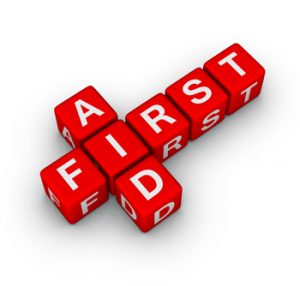The number one killer of horses is colic. Colic is not a disease, but rater a combination of signs that alert us to abdominal pain in the horse. Colic can range from mild to severe, but it should never be ignored. Most of the conditions that cause colic can become life threatening in a relatively short period of time.
Only by quickly and accurately recognizing colic – and seeking qualified veterinary help – can the chance for recovery be maximized. While horses seem predisposed to colic due to the anatomy and function of their digestive tracts, management can play a key role in prevention. Although not every case is avoidable, the following guidelines from the American Association of Equine Practitioners (AAEP) can maximize the horse’s health and reduce the risk of colic:
- Establish a daily routine – including feeding and exercise schedules – and stick to it!
- Feed a high quality diet comprised primarily of roughage.
- Avoid feeding excessive grain and energy-dense supplements. (At least half of the horse’s energy should be supplied through hay or forage. A better guide is that twice as much energy should be supplied from a roughage source than from concentrates).
- Divide daily concentrate rations into two or more smaller feedings rather than one large one to avoid overloading the horse’s digestive tract. Hay is best fed free-choice.
- Set up a regular parasite control program with the help of your equine practitioner.
- Provide exercise and/or turnout on a daily basis. Change the intensity and duration of an exercise regimen gradually.
- Provide fresh, clean water at all times. (The only exception is when the horse is excessively hot, and then it should be be given small sips of luke-warm water until it has recovered).
- Avoid putting feed on the ground, especially in sandy soils.
- Check hay, bedding, pasture and environment for potentially toxic substances.
- Reduce stress. Horses experiencing changes in environment or workloads are at high risk of intestinal dysfunction. Pay special attention to horses when transporting them or changing their surroundings.

 Your horse isn’t acting normal or sometime during the night he managed to gouge himself in the leg, or he’s developed a sudden limp. These are typical situations that cause even experienced horse owners and riders concern. Although the lists below may not include everything that you would need to know, have or respond to, it covers many of the major types of emergencies that sometimes occur with horses.
Your horse isn’t acting normal or sometime during the night he managed to gouge himself in the leg, or he’s developed a sudden limp. These are typical situations that cause even experienced horse owners and riders concern. Although the lists below may not include everything that you would need to know, have or respond to, it covers many of the major types of emergencies that sometimes occur with horses.